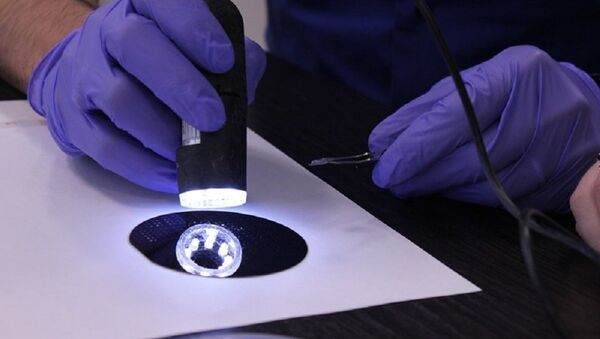Brought to you by the National Research Tomsk Polytechnic University
Tomsk Polytechnic University scientists and their German colleagues are the first to show how 2D advanced electronic materials-components interact at the nano-particle level. Their survey results are published in Nano-Letters.
This new technology will make it possible to calculate strains during interaction between materials and even to identify nano-level defects.
READ MORE: Eye-Popping Technology: Russian Scientists Develop Sight-Controlled Drone
This data can be used to upgrade tiny modern electronic components that are used in developing flexible displays for electronic devices, flexible optical and computer circuits, solar batteries and other innovative technologies, said Professor Raul Rodriguez from the University’s Faculty of Laser and Lighting Equipment.
"We need various classes of 2D materials, including semiconductors, to create a full line of essential electronic devices. We worked with molybdenum disulfide, one the most popular 2D semiconductors. We studied the nano-level strains in this material, as well as expansion or contraction processes in various structures," he told Sputnik.
To accomplish this, the scientists used gold nano-particles or nano-triangles. They placed two mono-layers of molybdenum disulfide on these nano-triangles. Due to the bulging form of these nano-triangles, the layer became deformed and this caused 1.4 percent local strains.
“We shouldn’t discount the interaction between a thin film and substrates in nano-devices,” he noted.
READ MORE: New Metallurgy and World-Class Scientists: How Russian Universities Innovate
“When these materials are studied, all of their electronic, zonal and optical properties are analyzed on a flat substrate. But the presence of metals that can act as electrodes inevitably changes the material’s properties,” the scientist added.
“Imagine a group of nano-particles illuminated by a laser beam. The laser spot measures about two microns, and the average diameter of one nano-particle is 40 nano-meters. The laser beam allows us to categorize nano-particles in the immediate vicinity we’re studying. As the laser spot’s diameter exceeds that of nano-particles, we will obtain an average signal and will be unable to distinguish between them. But, it is possible to obtain the signal from a nano-particle located on the nano-antenna’s tip,” Professor Rodriguez explained.
READ MORE: Russian Scientists Join Search to Explain Space Signals of Unknown Origin
Today, Germany manufactures these nano-antennas, but scientists have already announced plans to re-locate the production to Tomsk Polytechnic University soon.



